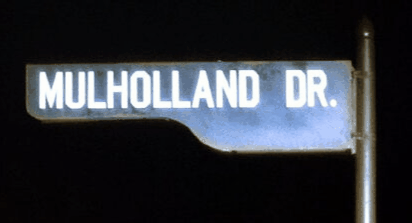Who Are We Writing For?
A symposium exploring the strategies for communicating contemporary art in the public realm
To celebrate and complicate world-renowned Swiss artist Roman Signer’s premiere of his new work, Transmissions from the River (Übertragungen aus dem Fluss), along the River Bogie in Huntly, Scotland, Deveron Arts is pleased to present Who Are We Writing For?, an intensive peer-led symposium addressing the state of critical art discourse and its role in the public realm. Sparked by Signer’s seemingly simple, yet highly theorized oeuvre that defies any specific genre and discourse, Deveron Arts is inviting a select number of participants from across the UK, Europe, and abroad to join in asking ourselves: Can we be both critical AND publicly accessible when it comes to discussing contemporary art?
From acute curatorial statements, strategic public outreach programmes, to mass marketing materials, how are we interpreting, translating, advertising, and elucidating contemporary art today? And who are we really writing for?
Please note: This event is by invite only.
Who Are We Writing For?
15 – 16 September 2011
Huntly, Aberdeenshire, Scotland
Co-produced by Amy Fung and Deveron Arts
http://whoarewewritingfor.com
My keywords were:
1. Production: Writing is work, one of many forms of invisible labour. It is a practice rather than simply a reflection upon practice. In the sense that it is a craft, we write for ourselves in the first instance – which is to say that writing is autoerotic. Art writing is for art, rather than writing about art. It is at once primary and secondary.
2. Distribution: Who are we writing for can be considered in terms of who is commissioning, of who has the power to commission. In this sense, who we write for and what we write is enabled and constrained by the channels we use to distribute writing. In art these are many and varied (artists’ publications, books, catalogues, blogs, zines, magazines, journals, etc).
3. Guttenberg: Familiar forms of distribution are dominated by a quasi-industrial model that generate well know genres (the catalogue, the feature, the review, the monograph, ‘gallery interpretation’). There are inherent problems with such channels of distribution for writers (the limitations for artists are even greater). When the channels of distribution become governmental, a ‘correct’ mode of address emerges. e.g. ‘interpretation’, ‘advocacy’, ‘analysis’. This entrenches modes of address that are tied to already vested interests.
4. Commons: At the moment we are witnessing an explosion of writing-friendly art media. The ‘industrial’ models of distribution co-exist with post-Guttenberg models, formats and protocols (e-journals, print-ondemand, blogs, websites, iBooks, writing-based events, etc.) They are all worthy of writers’ attentions. They can generate new ways of working. e.g. The Black Merkin, a swarm authored romance novel. The folkonomy and the commons run counter to the concept of intellectual property that underwrites so much of what artists and writers do. This should not put them off. Speculative Realists seem to be onto this, for example, as are The Kaiser Chiefs (The Future is Medieval).
5. Field: The form that writing takes cannot be separated from the field that it occupies. The next five keywords are concerned with this relationship.
6. Voice: Writing has a voice, one that can be used to different ends. The narrator has to establish a voice, there’s no getting away from this. The tone of the voice can prevent the reader engaging. It might not be appropriate to adopt the same voice at all times. (This runs contra to the need to establish a voice is in autuerist criticism in order to find a market and an audience for your writing). The singluar voice doesn’t allow much flexibility. Who is the narrator? Who expresses? It might help if we think of criticism in relation to reader-response criticism. Equally, we need to consider criticism as a form of literature. How well does criticism stand up against other forms of creative non-fiction?
7. Bi: ‘Parallel text’ is often used to indicate that translation is taking place in a mimetic and linear fashion, that what’s happening in the practice is being transparently represented in the text, that the writing and the art practice are being aligned, matched and integrated. This is the parallel text as bitext. Lazy art journalism, press releases and potboiler monographs tend to adopt this mode of address, as do critical journals and artist statements produced as hermunetics. Having too clear an idea of who you are writing for here leads to the production of the bi-text.
8. Ur: Critical writing aspires to the status of ur-text. Narrators are seldom completely reliable and there’s simply no reason why we should expect writers to be ‘professional’ tellers of The Truth, for their knowledge to be primary. Having too clear an idea of the act of writing leads to the production of the ur-text.
9. Mise-en-scene: Writing can establish its own contexts, its own field. The (unfashionable) concept of mise-en-scène in film theory (Cahier de Cinema) allows us to investigate the ways in which art writing might be better understood as a practice, one that enables practitioners to manufacture a field within which to situate their form, to conceive of the production of writerly context for their practice as their practice. A focus on mise-en-scène permits a visionary approach to writing, one that isn’t trapped by the tyranny of the present that dogs the contemporary.
10. Haptic: Material and sensual culture make strange bedfellows with writing. The tendency in the 70s and 80s was to ignore this problem and discuss all phenomena as ‘texts’ and the visceral as a discourse. Art writing has abandoned this project. A Ulysses Gramophone allows playful close reading, the performing of an experience that is process rather than outcome focussed, that is, engaged with the haptic, with the qualities of texture, surface, inscription, process and plane. A model of ‘paper’ curating, it narrates potential spatial and symbolic relations between works without fixing those relations in aspic.


